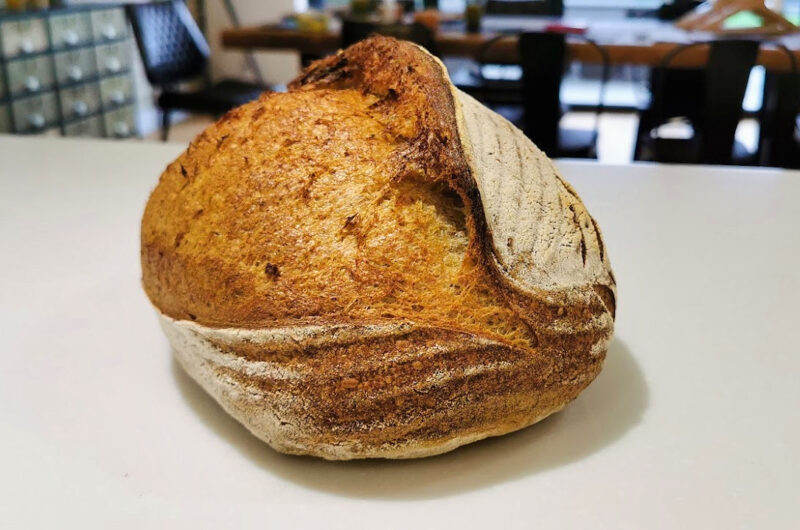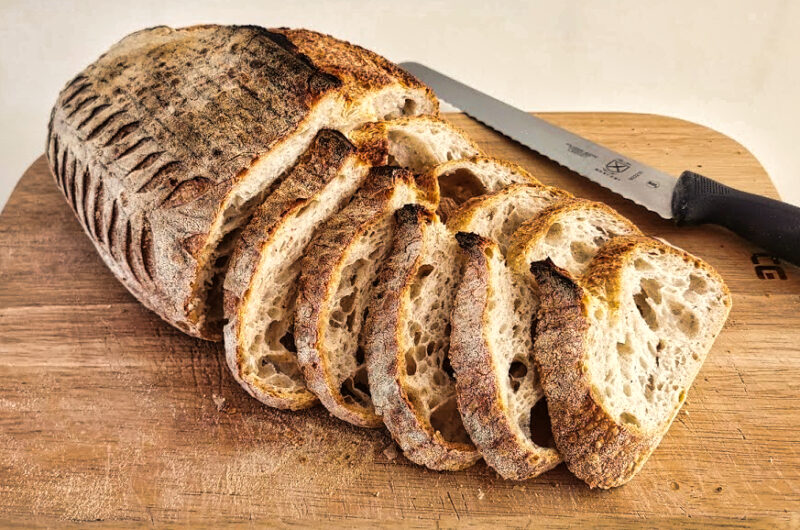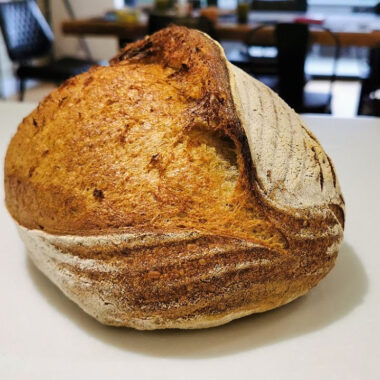This is my go-to recipe and method for a Sourdough Loaf and one that I normally use as the base for any additions or slight tweaks that I may make for other recipes.
I have found that, when working with Sourdough, perseverance is key! It can take some getting used to and it’s important to bear in mind that you’ll often have to experiment a little to find the best method for you due to there being so many variables involved. Below I have listed a few of the key things that can influence your end result and you should be aware of when making Sourdough
- flour (type, brand, protein content)
- temperature (room, oven, water, fridge)
- sourdough starter (each one is different!)
- time
- baking method (stone, steel, dutch oven)
- shaping techniques
This recipe will make 2 loaves and can also be scaled up or down as you require. Although I always make a minimum of 2 loaves as it’s a fairly involved process. Making 2 loaves or more also means that you can practice your shaping technique more too.
Sourdough Starter
To keep this recipe as short and simple as possible, we’ll assume that you already have a healthy Sourdough Starter but I’ll aim to write up some separate posts to cover this too. I’ll add links here when those posts are ready.
I like to feed my starter the night before I am going to make the loaves, around 9pm but there’s a fair bit of tolerance here so don’t stress if you feed earlier or later. The temperature of your kitchen will also influence when you may choose to feed your starter, warmer room temperature will mean that your starter is likely to grow more quickly etc.
In the morning, if your starter has doubled then you’re good to go. However, if I find that my starter hasn’t quite doubled then I’d be happy to carry on regardless as long as I could see some growth and bubbles to show signs of activity. Likewise, I wouldn’t be overly worried if it had double and then started to reduce in size again.
The Recipe
Sourdough Loaf
Difficulty: Difficult2
loaves1
hour30
minutes45
minutes24
minutesThe great thing is that we don’t need any expensive mixers or other equipment to start baking Sourdough bread. There are a few things that can make things easier i.e. Dough Scraper, Bannetons, Dutch Oven etc. But you can probably get by just using items you already have in your kitchen until you decide you want to invest in any new kit.
Something I would recommend investing in early if you don’t have one already is a simple small room thermometer or two. I always have one nearby when I’m making sourdough, and I also have another in the fridge. This means that you can take note of the room temperature each time you make Sourdough which can be very helpful if you are ever troubleshooting or comparing results from different bakes.
Ingredients
1100g White Flour (Shipton Mill Organic No. 4)
760g Water (room temp)
250g Sourdough Starter
20g Fine Sea Salt
Directions
- Day 1 (around 9pm)
Feed your Sourdough Starter the evening before making the bread. My starter is 100% hydrated so I feed it 50% water and 50% flour. I use wholemeal flour in my starter at the moment, but you can use whatever works for you. - Day 2 (around 7am)
Mix your Sourdough Starter and water in a bowl and combine until the starter has fully mixed into the water.






